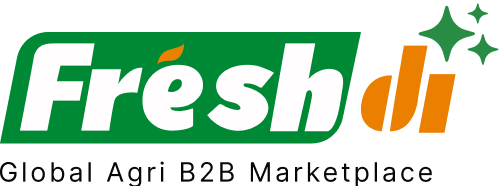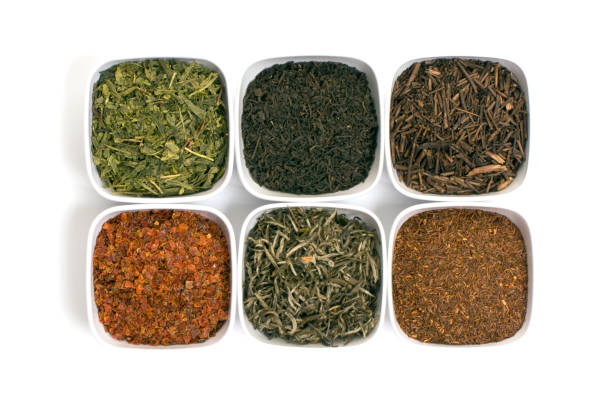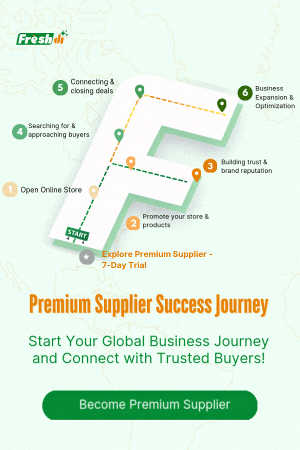Introduction – Current State of Play: The Tea Sector in Philippines
If you’re in the Tea business or looking to break into the market in the Philippines, here’s a quick reality check: 2025 is proving to be a game-changer.
The local tea industry is riding a fresh wave of momentum, backed by a cocktail of shifting consumer behavior, emerging health trends, and tech-driven engagement models. On the policy front, the country has recently opened up to new trade collaborations, improving import-export efficiency and easing sourcing regulations for global buyers. But it’s not all smooth sailing. Climate volatility has caused turbulence in tea supply chains across the Asia-Pacific region, with ripple effects hitting local inventories.
For businesses, that means one thing: agility is no longer optional—it’s critical. Those who stay informed, adapt quickly, and partner with the right suppliers will not just survive but thrive in this booming yet unpredictable market.
Deep Dive – Breaking News: Critical Updates & Their Effects
The Numbers Don’t Lie: Tea is Booming in the Philippines
Let’s get straight to the stats. The Philippine tea market was valued at around USD 308.63 million in 2023. It’s on track to double to USD 615.76 million by 2032, growing at a strong CAGR of 8.36%. That’s not just growth—it’s acceleration.
What’s Driving This Surge?
1. Health-Conscious Consumption is on the Rise
More Filipinos are ditching sugary sodas and switching to teas that claim health benefits. Herbal teas, detox blends, and kombucha are leading the charge—tapping into a health-aware demographic of over 20 million people.
2. Bubble Tea is Now a Lifestyle
Cold teas, especially bubble tea, are no longer just beverages—they’re social experiences. In 2023 alone, 12 million consumers reported buying cold tea weekly. The ability to customize your drink with 200+ toppings has made it not just a product but a personality statement.
3. Premiumization is the New Norm
As incomes rise, so does the demand for high-end products. Shoppers are now splurging on matcha, oolong, and other exotic blends. Tea is becoming a luxury good, a status symbol even.
Supply Chain & Investment Trends
4. Sustainability is In
With 40% of consumers preferring eco-friendly products, many tea brands are turning green—literally. They’re switching to biodegradable packaging and working with local organic farms.
5. Going Digital: The Tech Tea Revolution
The Philippines has 110+ million mobile subscriptions. Tea companies are using this to their advantage with apps that offer discounts, loyalty programs, and order tracking. Over 25 million app-based transactions were recorded last year alone.
6. Market Consolidation
Big names like Chatime (23% market share), Gong Cha, and Serenitea have cornered the market. Their success? Consistent innovation, strategic partnerships, and airtight branding.
Challenges Brewing Beneath the Surface
7. A Saturated Market
With 6,000+ tea shops across the nation, standing out is tough. Only those with a unique value proposition will make the cut.
8. Weather Woes & Supply Chain Disruptions
Climate change is affecting key tea-producing regions in Asia-Pacific. The result? Delays, price volatility, and inconsistent quality.
Top 9 Verified Tea Suppliers in Philippines – Relevant in the Current Climate
Choosing the right supplier is more than just comparing price tags. In this volatile market, you’re looking for credibility, consistency, and adaptability. These nine suppliers have been vetted based on their global scope, export history, certifications, and Freshdi buyer reviews—making them reliable partners for Q2 of 2025.
1. BRT Global LLC Consumer Goods Trading
- Specializes in premium matcha and organic green teas
- USDA Certified products
- Strong export portfolio across Asia and North America
- Frequently updated product listings on Freshdi
2. Blue Leaf Tea Co.
- Known for exotic tea blends like butterfly pea and lemongrass
- Works with local farmers to ensure sustainability
- Offers private labeling options
3. Cebu Herbal & Tea Trading
- Focuses on herbal infusions and wellness teas
- Strong local distribution channels
- Supplies to spas, hotels, and wellness clinics
4. Luzon Agro-Exporters
- Bulk tea supplier with scalable production capacity
- Offers OEM/ODM manufacturing
- Compliant with HACCP and ISO standards
5. Mindanao Organic Tea Farmers Cooperative
- Direct-from-farm supply chain
- Specializes in black and green teas
- Fair-trade certified, eco-conscious operations
6. TeaHaus Philippines
- Urban-centric branding with a youth-focused tea line
- Offers RTD (Ready-to-Drink) bottled teas
- Popular among food chains and convenience stores
7. PureLeaf Philippines
- Strong B2B presence with consistent volume capacity
- Supplier of choice for many milk tea franchises
- Offers seasonal blends and limited-edition flavors
8. Island Teas Inc.
- Focuses on cold brew and nitro teas
- State-of-the-art packaging technology
- Offers customized blends for cafes and restaurants
9. GreenGold Imports
- Specializes in imported teas with local repackaging
- Competitive pricing, fast logistics
- Offers sample packs and low MOQ for startups
Dynamic Ranking Note: Keep in mind that platforms like Freshdi provide real-time supplier rankings such as “Suppliers of the Month/Quarter” based on verified trade activity, RFQ responsiveness, and buyer feedback. Check often to see who’s trending and performing.
Market Navigation – Strategic Responses to Today’s Tea Landscape in Philippines
Opportunities You Shouldn’t Miss
- Health-First Product Lines: If you’re not offering teas with a wellness angle, you’re leaving money on the table. Detox teas, immunity boosters, and calming blends are hot commodities right now.
- Personalized Products: Custom blends and DIY tea kits are gaining traction. Consumers want more control over their tea experience.
- Digital Partnerships: Collaborating with mobile food delivery and e-commerce platforms can expand your reach fast.
Risks You Need to Watch Out For
- Supply Chain Unpredictability: Climate issues can cause sudden inventory shortages. Always keep a buffer stock and diversify sourcing options.
- Overcrowded Market: With so many players, aggressive marketing and unique branding are essential for visibility.
Sourcing Strategy Adjustments
- Diversify Suppliers: Relying on one source is risky. Use platforms like Freshdi to compare verified suppliers quickly.
- Embrace Technology: From QR codes on packaging to AI-driven customer engagement tools—tech is a must-have, not a nice-to-have.
- Stay Green: Align your sourcing with sustainability goals. Consumers are watching, and they care.
Conclusion – Key Takeaways for Businesses in a Dynamic Market
2025 is shaping up to be a landmark year for the tea market in the Philippines. Demand is booming, but so are the challenges. Whether it’s climate-induced supply shocks or intense market saturation, only the most informed and agile players will thrive.
Here’s what you need to do:
- Act fast on trends like health-focused teas and premium experiences.
- Diversify your sourcing strategy to adapt to supply chain disruptions.
- Leverage digital platforms for both marketing and procurement.
And don’t forget—the market changes fast. Platforms like Freshdi can keep you updated with real-time insights, supplier rankings, buyer reviews, and RFQ activity—helping you make smarter, faster decisions.
Checklist for Tea Buyers in Q2 2025
- ✅ Identify suppliers with verified certifications
- ✅ Prioritize suppliers with flexible MOQ and fast logistics
- ✅ Focus on trending products: kombucha, herbal blends, matcha
- ✅ Confirm suppliers’ sustainability practices
- ✅ Use Freshdi to monitor pricing shifts and RFQ spikes
Future Outlook: What’s Brewing in the Tea Market?
- Expect AI-powered personalization tools integrated into tea apps
- Surge in functional beverage innovations using adaptogens and superfoods
- Increased cross-border trade as new trade agreements reduce barriers
- Growth in direct-to-consumer (DTC) tea startups
How Freshdi Empowers Tea Buyers
- 🔍 Verified Supplier Listings: Trustworthy profiles with certifications and buyer feedback
- 📊 Live RFQ Trends: See what’s hot in real time
- 📦 Global Sourcing: Easily find suppliers from multiple countries
- 🔔 Smart Alerts: Get notified of price drops, delivery delays, or new product launches
- 🛠️ Custom RFQ Tools: Tailor your requests to find the best match
References
- Philippines Tea Shop Market Thrive with Valuation Set to Reach USD 615.76 million by 2032 – Astute Analytica
- Asia-Pacific Tea Market – Verified Market Research
FAQs
1. What kind of tea is most popular in the Philippines in 2025?
Bubble tea and health-focused blends like herbal and detox teas are leading the charge due to their appeal to younger and health-conscious consumers.
2. How can I verify a tea supplier in the Philippines?
Use B2B platforms like Freshdi, which offer supplier verifications, certifications, and buyer reviews.
3. Is there a demand for organic tea in the Philippines?
Absolutely. With growing health awareness, organic and sustainably sourced teas are in high demand, especially among middle and upper-income consumers.
4. What’s the biggest risk when sourcing tea from the Philippines right now?
Supply chain instability due to climate change is a significant risk. Diversify your supplier base to mitigate potential disruptions.
5. Why should I use Freshdi for sourcing tea?
Freshdi offers real-time market intelligence, dynamic supplier rankings, and direct access to verified exporters—making it easier to make smart, informed sourcing decisions.


